The Department for Education this week published school-level data on GCSE and A-level results, including Progress 8 and Attainment 8 scores.
Here, Schools Week looks at the winners and losers from this week’s data dump.
A zero-sum game
Because of the nature of Progress 8, the national score is designed to be zero. But schools are moving around that measure, with numbers almost exactly balanced between winners and losers. The biggest drops in Progress 8 scores compared with last year were at Colyton Grammar School, Perry Beeches the Academy and Simon Langton Grammar School for Boys whilst Adelaide School, Bloxwich Academy and Manchester Creative Studio saw the biggest leaps forward.
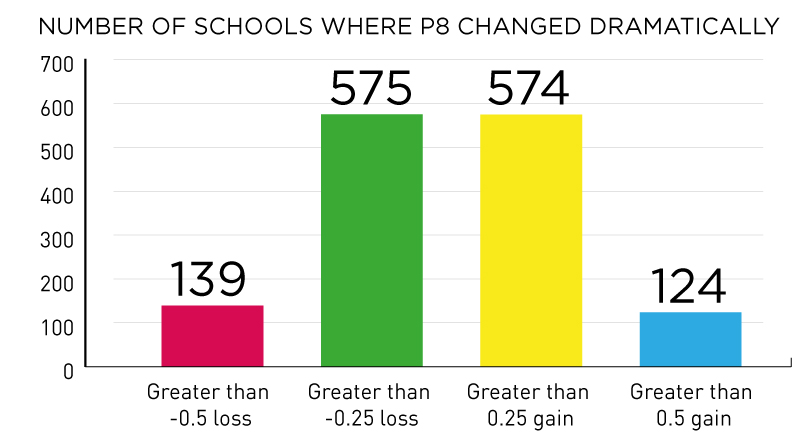
Changing the measure
Shifting the focus of school league tables from attainment to progress has led to big wins for some schools – but dramatic drops for others.
Fullhurst Community School was the biggest winner, with an A*-C pass rate of 46 per cent but a Progress 8 Score of 0.67 making it 2,520th-best in the country according to the old measure but 200th for progress under the new regime. Meanwhile, selective schools are feeling the pressure: two of the five biggest losers from Progress 8 were grammars, with Colchester grammar school pupils achieving a 99-per-cent five A*-C pass rate but a negative progress 8 score of -0.3 putting it in the top fifty on the old measure but 2,232nd for progress.
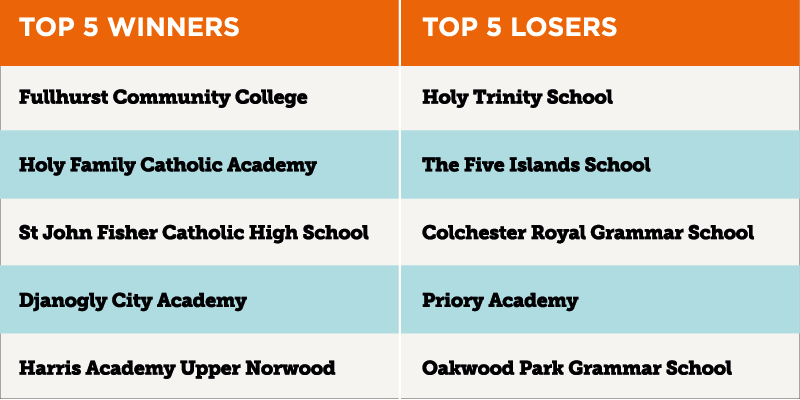
Free schools a mixed bag
The New Schools Network was quick to celebrate free schools coming joint top of the table for school type on Progress 8. Free schools advocate Toby Young described the results as “a ringing endorsement of the policy” and said “the data means that in every phase of education – primary, secondary and sixth form – free schools are outperforming all other types of school”. However, analysis by Datalab later revealed a mixed picture with some free schools achieving sky-high results, whilst others languished well behind. Schools Week found that a third had scores of -0.2 or less.
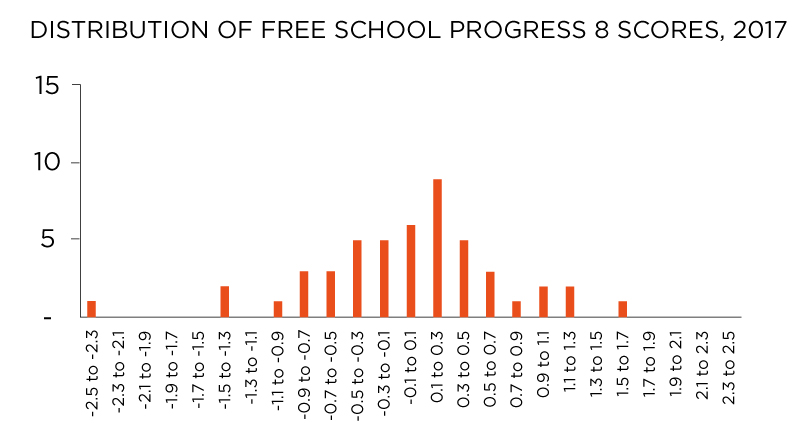
KS5 woes for studio schools and UTCs
University technical colleges have the lowest average A-level points score, according to the data.
The average score for UTCs, which often have a more vocational offer, was 20.7, equivalent of a D.
The second lowest score was at studio schools, which focus on creative and industry-related courses.
Pupils at these schools achieved a slightly higher score of 23, the equivalent of a D+, still well behind results achieved at converter academies and 16-to-19 free schools. These notched up average A-level scores equivalent to a C+.
The picture for pupils leaving studio schools before key stage 5 is also mixed.
Destination data published this week shows that pupils who leave studio schools at 16 are almost three times less likely than the average pupil to be in the job or course of their choice by the following March.
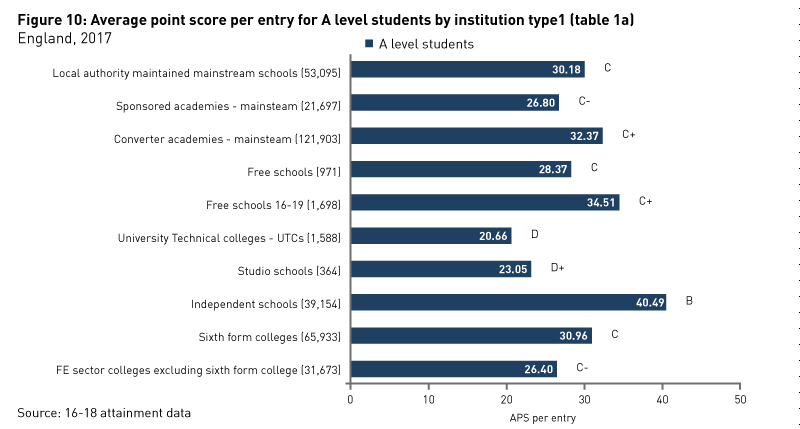
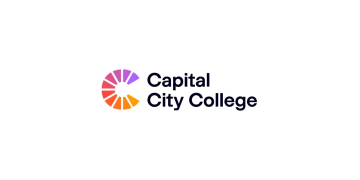




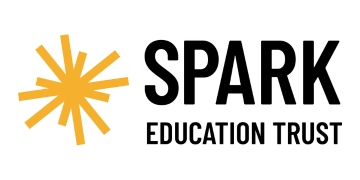


Why call it ‘performance’ data? These are simply test scores. For performance it would have to be a machine, and schools aren’t machines. They’re made up of individuals who have good days and bad and have lives and minds of their own.
We legitimise a way of understanding, and impoverishing, the world by using its language.
Toby Young, New Schools Network, says free schools outperform other types of school based on Progress 8 average. But free schools are also more likely to be below the Progress 8 floor standard. Both these statements are true but they are also misleading as I explain here:
http://www.localschoolsnetwork.org.uk/2017/10/20-of-free-schools-are-below-progress-8-floor-standard-more-than-any-other-type-of-school-barring-utcs-and-studio-schools